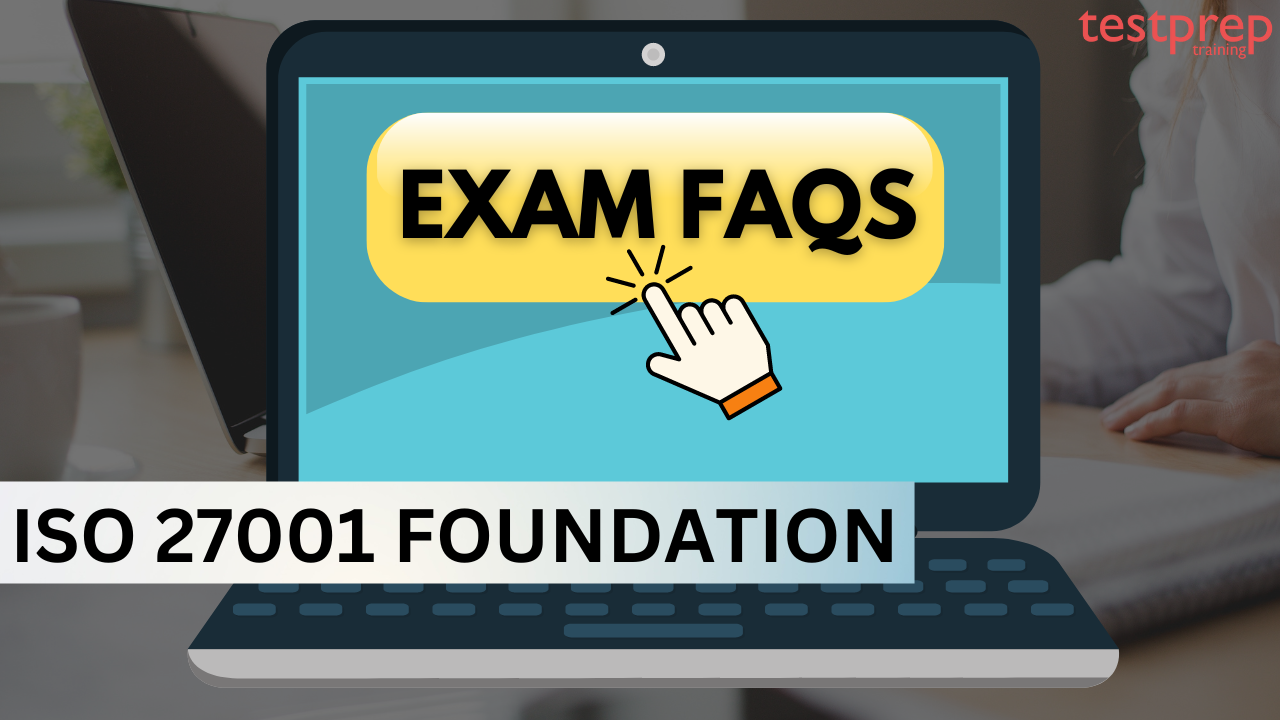ISO 27001 Foundation FAQs

1. What is the ISO 27001 Foundation Exam?
ISO 27001 sets down the rules for creating, maintaining, implementing, and always enhancing an information security management system (ISMS). This certification is made to assist participants in understanding the basics of information security and the need for an information security management system according to ISO 27001:2022. Moreover, the “ISO 27001 Foundation” certificate intends to prove that individuals who earn it are familiar with the ISO/IEC 27001 requirements for managing and implementing an ISMS.
2. What is the target audience for the ISO 27001 Foundation Exam?
- Managers and consultants looking to learn more about information security.
- Professionals who want to understand the ISO/IEC 27001:2022 requirements for an ISMS.
- Individuals involved in or in charge of information security activities in their organization.
- Those aspiring to build a career in information security.
3. Is there any prerequisite for the ISO 27001 Foundation Exam?
No, there is no prerequisite for the exam.
4. What you will learn in the ISO 27001 Foundation Exam?
After finishing this certification program, participants will have the skills to:
- Explain the key concepts, principles, and definitions of information security management.
- Clarify the primary ISO/IEC 27001 requirements for an information security management system (ISMS).
- Recognize the approaches, methods, and techniques employed for implementing and managing an ISMS.
5. How many questions will be there in the ISO 27001 Foundation exam?
The ISO 27001 Foundation exam consists of a total of 40 questions.
6. What is the ISO 27001 Foundation exam format?
The ISO 27001 Foundation exam has 40 questions, all of which are multiple-choice. These questions assess candidates’ comprehension of both simple and complex concepts. Each multiple-choice question has three options: one correct response (keyed response) and two incorrect response options (distractors). The time duration for the exam is one hour. You need to score a minimum of 70% to pass the exam.
7. What is the passing score for ISO 27001 Foundation exam?
To pass the exam, you need a score of at least 70%.
8. What are the ISO 27001 Foundation exam-taking requirements?
Candidates must be present at least 30 minutes before the exam commences. Late arrivals will not receive extra time and may be denied entry to the exam. Candidates must bring a valid ID card (national ID, driver’s license, or passport) and show it to the invigilator. The exam lasts for one hour. For Foundation exams taken in a non-native language (paper-based), an additional 10 minutes can be granted upon request on the exam day.
9. How many exam formats does PECB offer?
PECB offers two types of exam formats:
- Paper-based: Exams are provided on paper; candidates can only use the exam paper and a pen. Electronic devices like laptops, tablets, or phones are not allowed. The exam is supervised by a PECB-approved Invigilator at the training course location organized by the Partner.
- Online: Exams are electronically delivered through the PECB Exams application. The use of electronic devices, such as tablets and cell phones, is prohibited. The exam session is remotely supervised by a PECB Invigilator via the PECB Exams application and an external/integrated camera.
10. What is the cost of the ISO 27001 Foundation exam?
The costs for this certificate program are:
- Foundation Exam: $500
- Application fee for the certificate: $200.
11. What are the major topic areas for the ISO 27001 Foundation exam?
The major topics include:
- Fundamental principles and concepts of an information security management system (ISMS)
- Information security management system (ISMS)
12. How will I receive the Exam Results?
The communication of exam results is done through email. The timeframe for receiving results is within three to eight weeks for essay-type exams and two to four weeks for multiple-choice paper-based exams, starting from the exam date. Online multiple-choice exam results are instantly provided. Successful candidates can apply for one of the credentials in the respective certification scheme. For those who don’t pass, the email includes a list of domains where improvement is needed to guide preparation for a retake.
13. What is the PECB Exam Retake Policy?
Candidates have the opportunity to retake the exam multiple times, but there are certain restrictions regarding the time intervals between retakes. If a candidate does not pass the exam on the first attempt, they must wait for 15 days after the initial exam date for the next attempt (1st retake).
14. How to apply for certification Renewal?
PECB certifications are valid for three years. Certified professionals must meet requirements related to the designated credential, including fulfilling the required number of continual professional development (CPD) hours and paying an annual maintenance fee of $120 to maintain their certification.
15. Is there any training course for the ISO 27001 Foundation Exam?
Yes, ISO/IEC 27001:2022 Foundation training enables you to grasp the fundamental aspects of setting up and overseeing an Information Security Management System, in line with ISO/IEC 27001:2022. Throughout this training, you’ll comprehend various components of ISMS, covering aspects like ISMS policy, procedures, performance metrics, management commitment, internal audit, management review, and continuous improvement.
Upon finishing the course, you can take the exam and seek the “PECB Certificate Holder in ISO/IEC 27001:2022 Foundation” credential. This PECB Foundation Certificate indicates your comprehension of essential methodologies, requirements, frameworks, and management approaches. This covers:
- Lecture sessions include practical questions and examples.
- Practical exercises involve examples and discussions.
- Practice tests mirror the format of the Certificate Exam.
For More: Check Here

